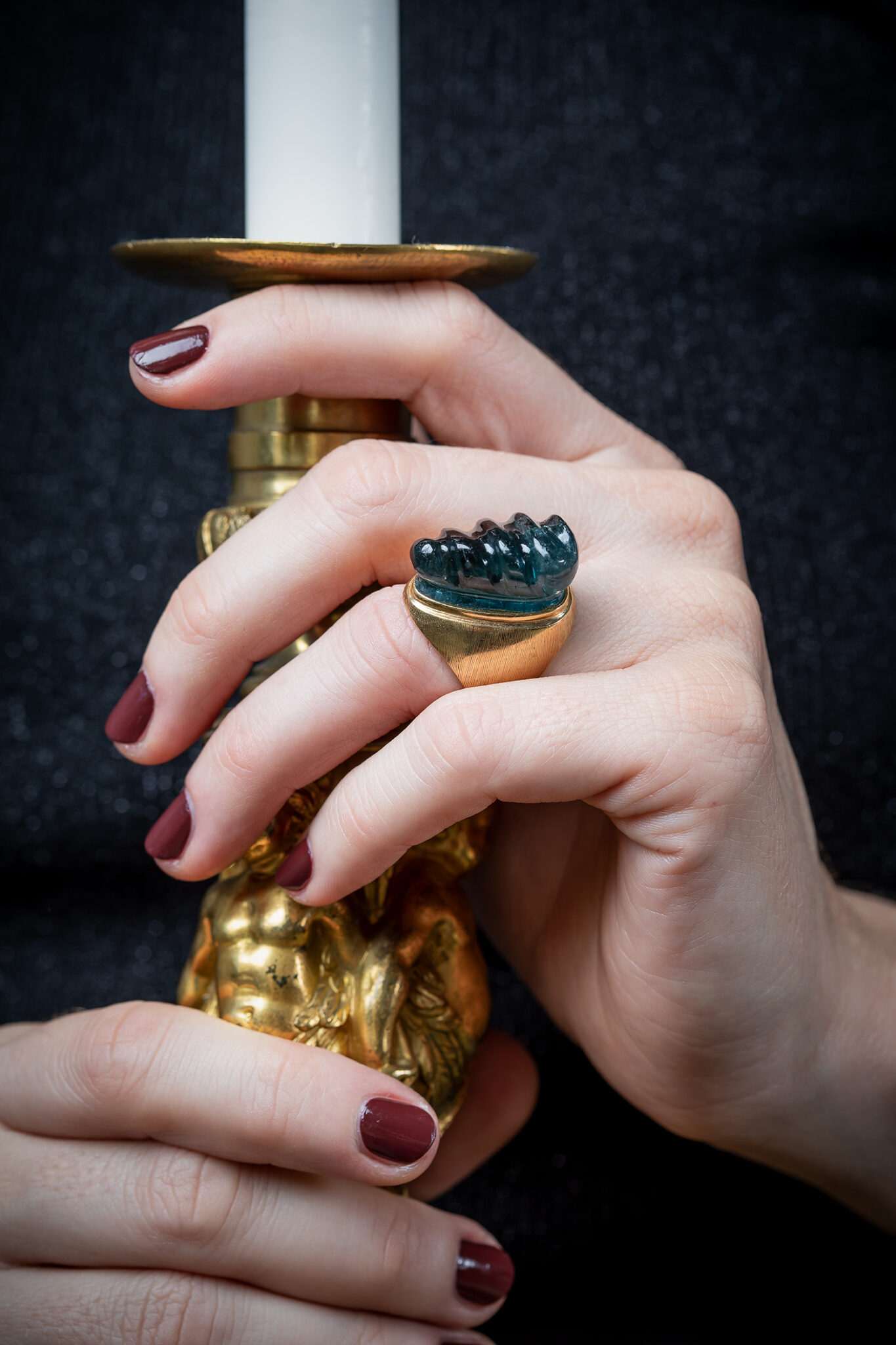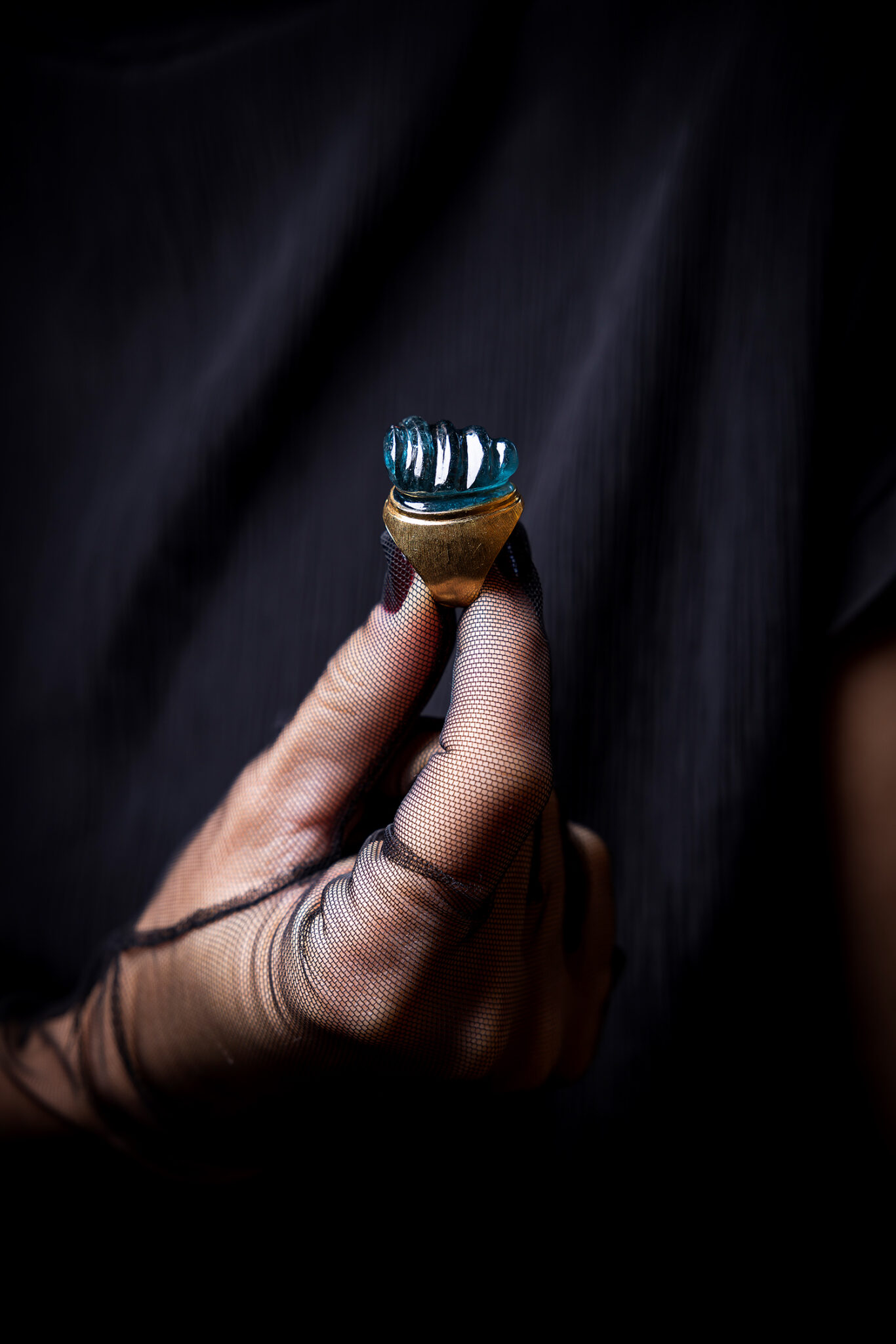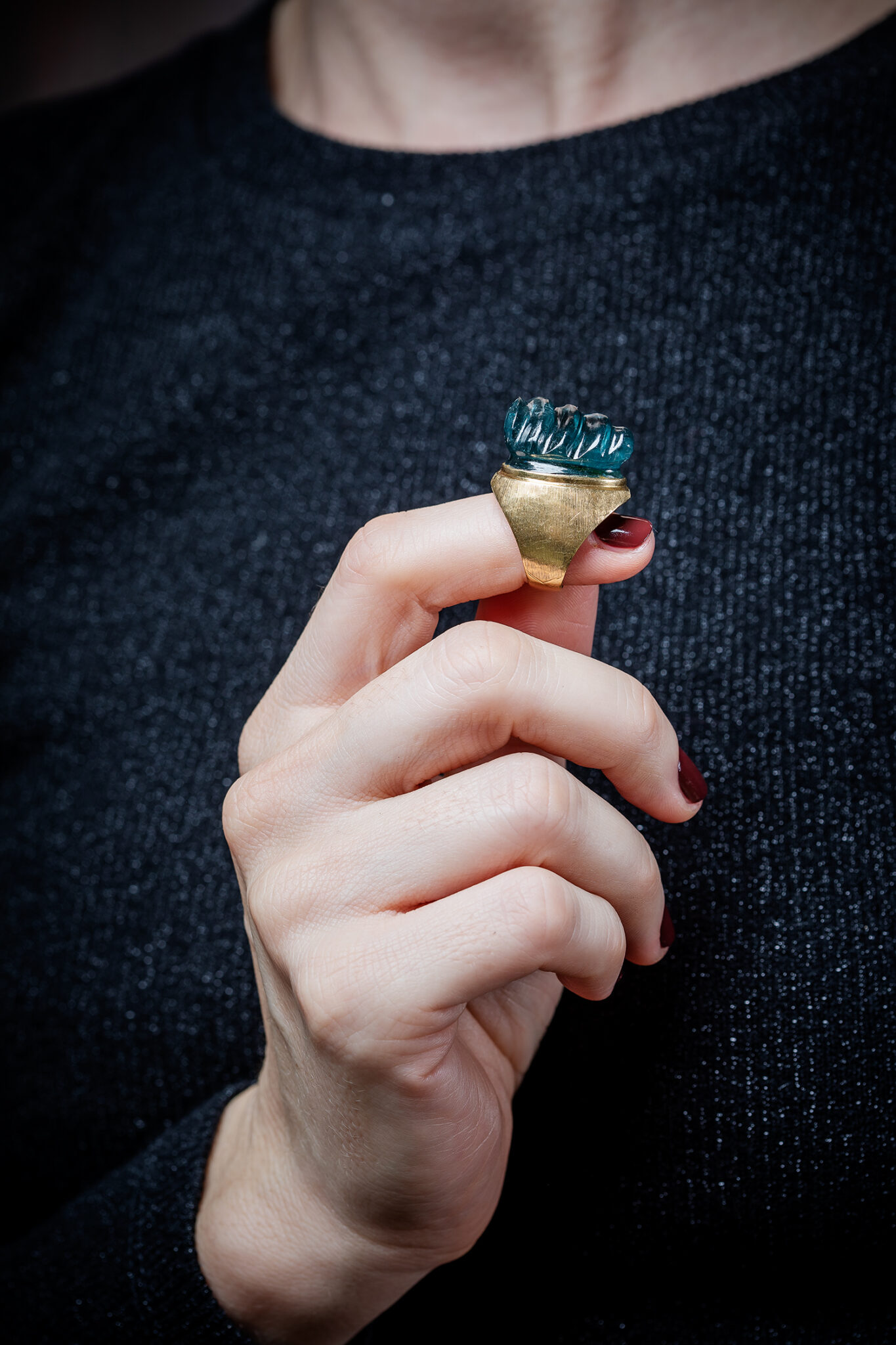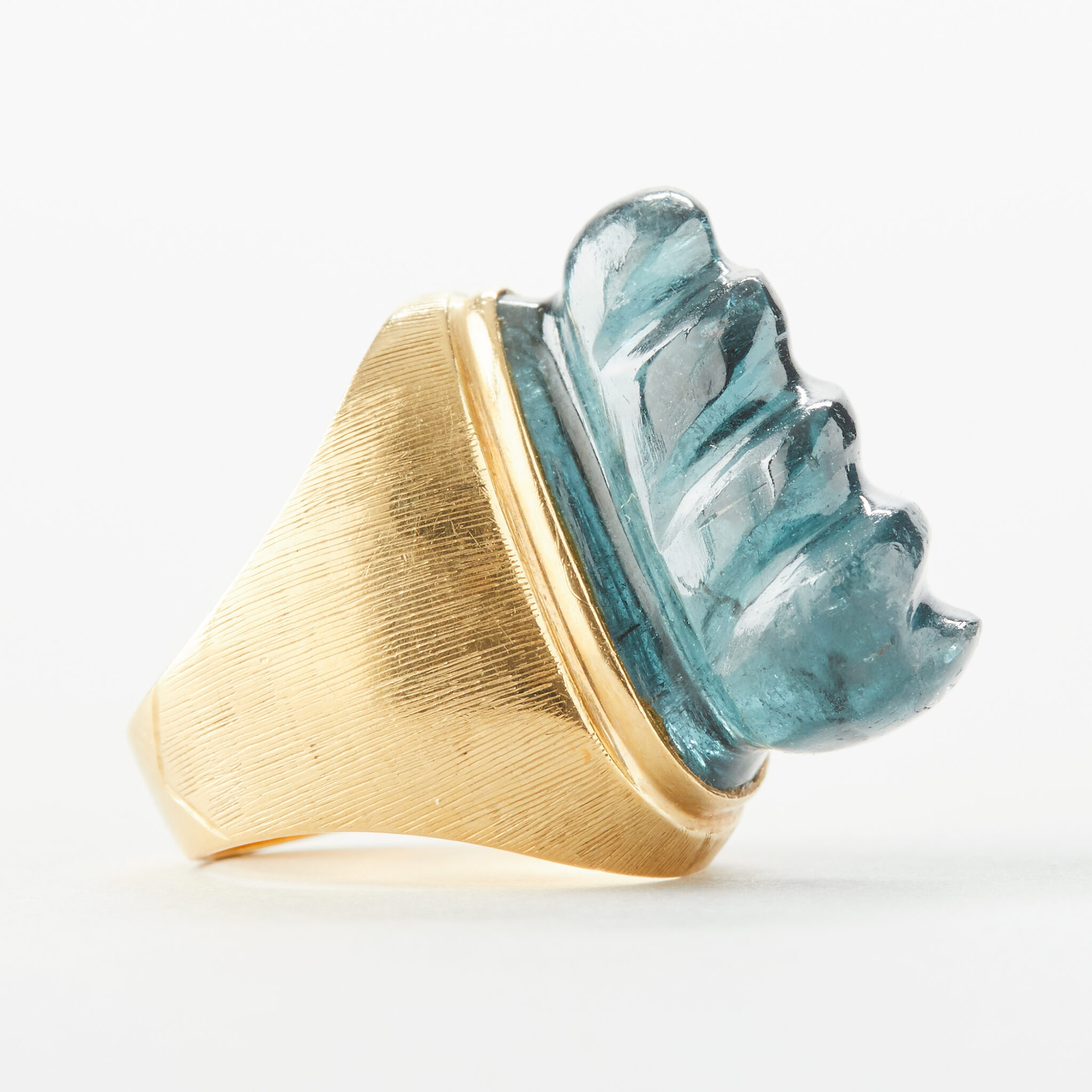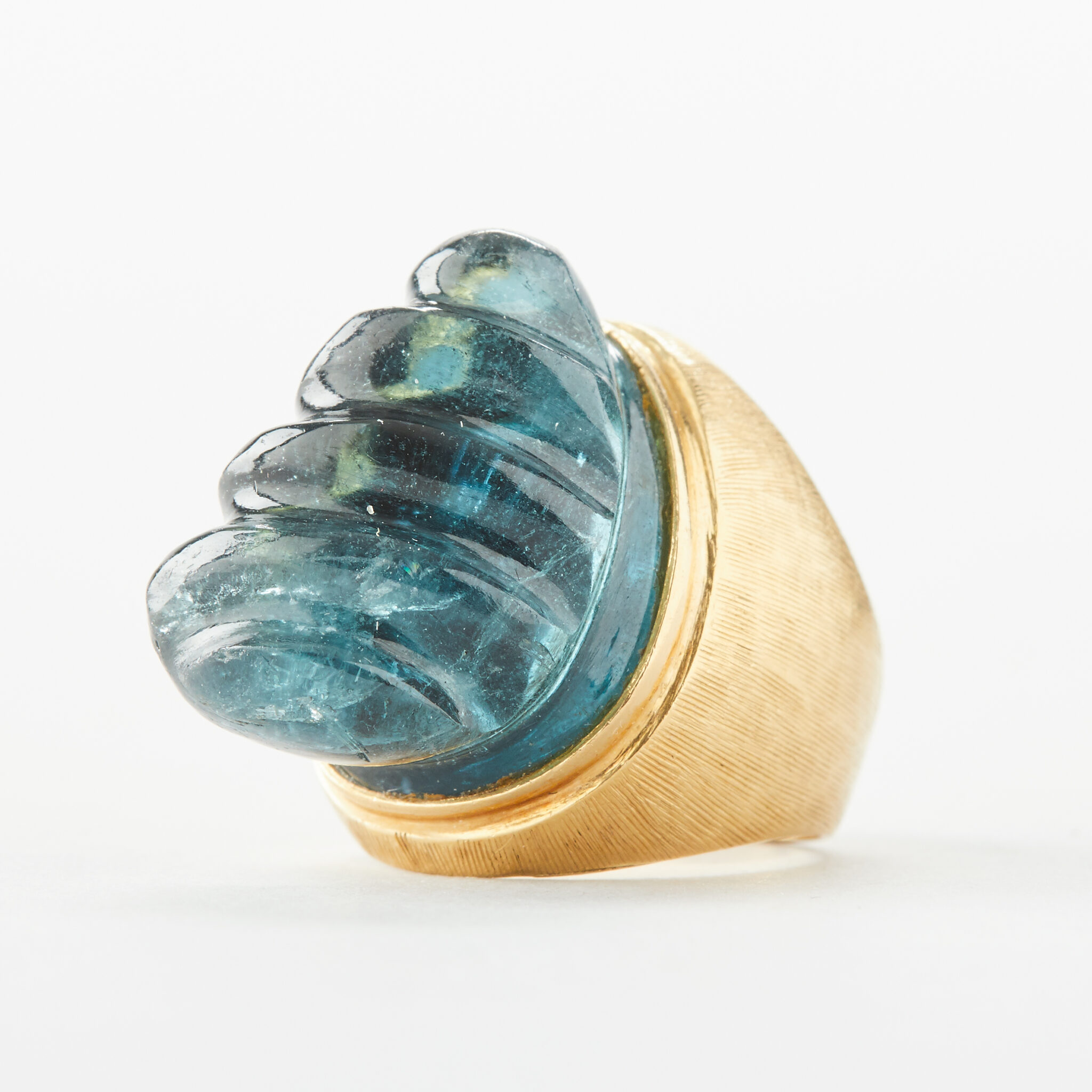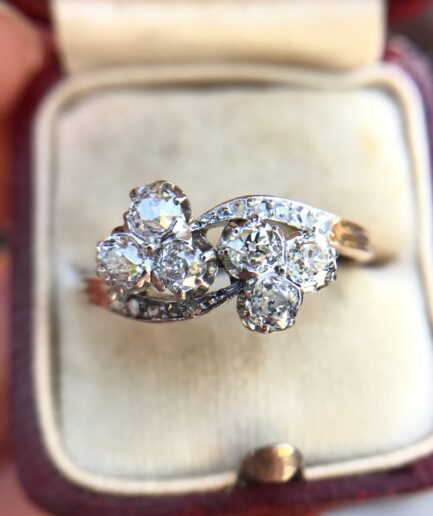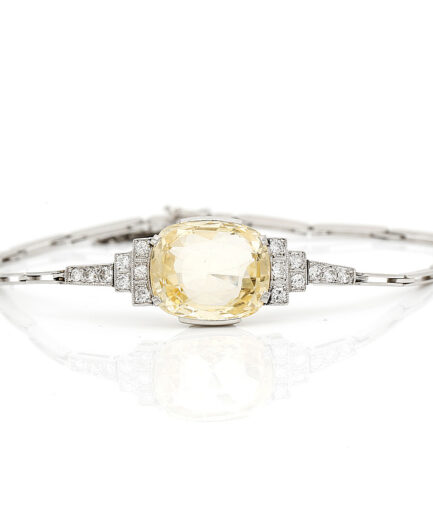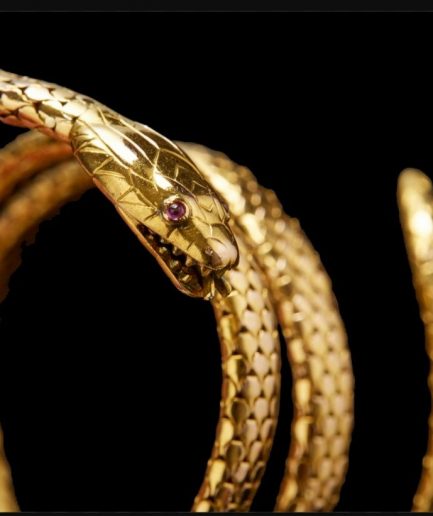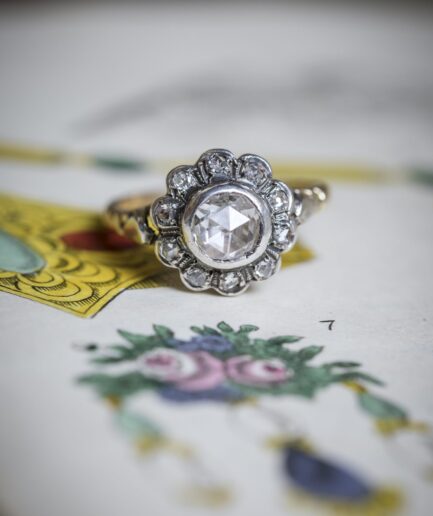Ring made of brushed 18 Karat Gold featuring a carved blue/green tourmaline.
Weight approx 14,9 gram.
Size Ø 16,25 mm. / L 1/4 – size can be somewhat adjusted.
Bruno Guidi was the lead designer and chief goldsmith of the acclaimed Brazilian jeweler Haroldo Burle Marx for 35 years. Haroldo studied gemology in Idar-Oberstein, Germany, the center of the gemstone cutting industry before opening his shop at Rodolfo Dantas, 6 Copacabana, Rio de Janeiro in 1954. There he employed a small team of Brazilian and Italian craftsman, including master goldsmith, Bruno Guidi. Guidi, whose signature can be found on some of the workshop’s pieces, is a master engraver responsible for much of the fine silk-like gold textures synonymous with the workshop. Without seeing the stamp, you’d likely never know the difference. one-of-a-kind, and there is no pre-casting involved. Each piece was created entirely by hand starting from a piece of gold without the aid of any molds. Our ring is marked GB.
The boardwalk of swirling black and white pebbles at Copacabana beach is one of the most famous sites in Rio. It was designed by Roberto Burle Marx in the 1930s
The Burle Marx brothers, Roberto and Haroldo, each excelled in creative fields. Roberto Burle Marx was a world-famous landscape architect, artist and sculptor, while Haroldo was a jeweler who was celebrated for the unique cut of his stones and who pioneered the use of Brazillian gems carved like abstract, organic sculpture. Roberto collaborated on several projects with renowned Brazilian architect Oscar Niemeyer including the capital in Brasília. He also designed the shapes for outrageously imaginative gems that were set in jewels created by his brother Haroldo Burle Marx. Today, we believed that Burle Marx jewelry deserves rediscovery on a large scale.
The Burle Marx brothers approached jewelry design much like an architect would, drafting drawings and making scale models for each of their creations. Inspired by Brazil’s landscapes, oceans, beaches, minerals and gemstones, they drew on the country’s natural beauty to create one-of-a-kind jewelry. Their pieces celebrate Brazil’s abundance of colored gemstones, such as aquamarine, tourmaline, topaz, garnet, quartz, citrine, amethyst, chalcedony, amazonite and emerald.
The Burle Marx brothers were masters of a style called the forma livre (free-form) cut, which transformed Brazilian semi-precious gems into architectural elements of the jewelry. Burle Marx jewels are completely handmade with absolutely no pre-casting. Their jewelry captures a curvaceous movement that evokes the rhythmic energy of Brazil’s Samba dance. The forms are at once organic and architectural, characterized by a timelessness that reflects the era of Cleopatra while also complementing the fashions of today.
The Burle Marx brand has been such a part of the rich cultural Brazilian tradition that it was often commissioned by the Brazilian government to make jewelry pieces for visiting dignitaries, such as the Queen of England, the former Empress of Iran, Pope John Paul II, Princess Michiko Shoda of Japan, Indira Gandhi and many other important world political figures.
Haroldo’s jewelry captures that curvaceous kind of modern style that exists south of the equator. The forms are at once organic and architectural. In a 1983 interview in Connoisseur magazine he said, “Although I love it, the past cannot be brought back again. New things must be made. I like to think that I’m a small link in pioneering jewelry concepts in finding new roads, although I deeply respect the old roads.”’



